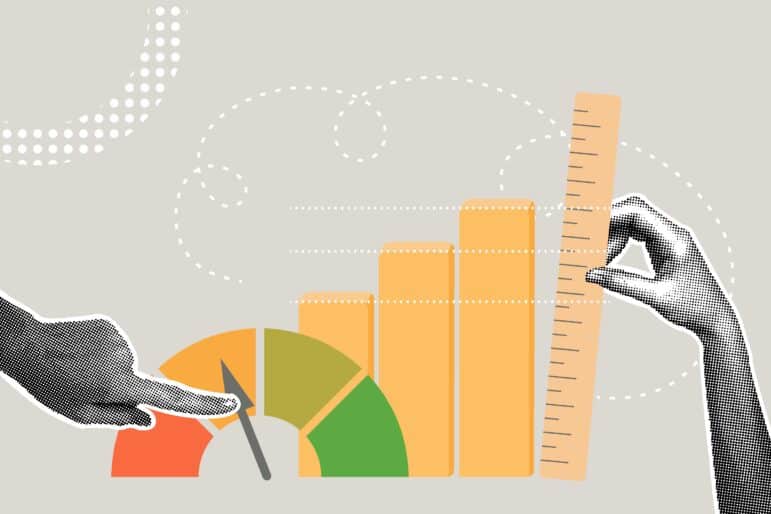Written By: Sean Toole, Senior Vice President, Change and Innovation Agency

Government efficiency has become a key point of conversation in recent months, and along with it, the topics of budget cuts and staff reductions. The Department of Health and Human Services (HHS), which accounted for roughly a quarter of federal spending (25.4%) in 2024, has been at the forefront of such conversations. This includes changes announced in March to restructure almost the entirety of HHS—with many agencies anticipating potential changes to program structures, funding, and/or staffing levels in the near future and some already managing such changes.
To make the most of these efficiency initiatives, agencies should focus on maximizing program capacity and adaptability—and there are many time-tested strategies for doing just that.
Background: Agencies are Familiar with Change, but Many are Stretched Thin

While program changes often come with some level of uncertainty and anxiety, human services agencies are no strangers to change. In fact, many managed through numerous shifts in policy, practice, demand, and resources during the COVID-19 pandemic. In our experience, these agencies are also very familiar with the task of accomplishing more with less. So, efficiency-oriented program changes aren’t really new for human services agencies, but they’re coming at a time when many agencies already feel stretched thin from the hurdles of the past five-plus years.
For example, many agencies currently struggle with retention, recruitment, and high turnover rates. A recent study indicated that over half (52%) of state and local public sector workers were considering leaving their jobs. And high turnover not only tends to mean that agencies are pressed for staff, it also costs them money. The North Carolina Office of State Human Resources estimated that employee turnover was costing just under half a billion dollars each year, and Texas recently estimated that state agency turnover cost roughly $1.2 billion per year. For agencies already running low on people and funds, the possibility of further resource reductions and program changes can be daunting, but there are proven ways to ease such transitions.
The Secret to Enhancing Capacity and Adaptability
There are a lot of things agencies can do to enhance program capacity and adaptability that don’t necessarily require adding staff or increasing budgets. From what we’ve observed, most agencies have the potential to achieve considerable improvements in outcomes using the resources they already have by leveraging one key approach: business processes redesign (BPR). As agencies navigate the efficiency initiatives shaping the current policy, program, and funding landscape, leveraging BPR to maximize program capacity and adaptability will be more important than ever.
Advice on Navigating Times of Change from Change Agents
At Change & Innovation Agency (C!A®), we specialize in using BPR to help human services agencies navigate change, unlock capacity, and create sustainable processes. Our change agents have helped agencies across the country mitigate the impacts of sudden, considerable shifts in consumer demand, budgets, personnel, and policy, and we’ve learned a lot through these partnerships. For example, when we started our partnership with the Hawaii Department of Human Services (DHS), they were facing caseload increases ranging from 15%–115% and staffing reductions of up to 50%, leading to challenges with timeliness. We helped DHS mitigate the impacts of these caseload increases and staffing decreases, achieve a statewide timeliness rate of 97%, and increase their capacity to offer same-day service to seven out of every ten families.
“When we met C!A, we were in a tailspin. Our caseloads increased by 35 percent, we had a massive reduction in our workforce, we were under a hiring freeze, our timeliness rates were atrocious—in some offices they were down to 28 percent. We had no resources to meet the increased demand. They came in, calm and peaceful, and gave us control over that chaos. And that office with the abysmal timeliness rates, it’s operating at 98.2 percent.”
– Pankaj Bhanot, Former Director, State of Hawaii, Department of Human Services
And Hawaii is not an outlier. On average, we’ve had the privilege of helping our clients serve 40–130% more families, 70% faster. Across all our clients and the challenges they’ve overcome, we’ve also been lucky enough to witness the following truths in action, time and time again, and we offer them here as advice for agencies navigating future program changes:
1. In this moment, most agencies have the capacity to accomplish more than they currently know with the resources they already have—the trick is unlocking that capacity.
Inefficient and fragmented processes often drain more capacity than agencies are aware of, and many agencies don’t fully realize what their current capacity is. We developed a Medicaid/SNAP Capacity Calculator to help Medicaid/SNAP agencies assess their current capacity as a starting point for process improvement measures.
2. Technology adoptions can help unlock capacity, but they will never be more important or effective at unlocking capacity than evidence-based business process redesign.

Adding new technology on top of inefficient and fragmented processes doesn’t resolve the inefficient and fragmented processes. Business process redesign is critical for unlocking meaningful capacity, with or without technology. However, this doesn’t mean that quick fixes and fast gains aren’t possible. BPR often shows substantial improvements faster than agencies expect. We helped St. Louis transform their child welfare program from the worst metrics in the State to the best in under a year, for example, earning a Stevie Award.
3. Flexibility, adaptability, and interoperability are key to resilient, sustainable programs.
With the continuing presence of change in the HHS landscape, flexibility and adaptability are paramount to successful operations, and agencies should look to build flexibility and adaptability into their processes and platforms. And because many HHS programs have overlapping eligibility requirements and verification processes, interoperability provides opportunities to share resources and continually improve efficiency.
4. When in doubt, turn to the people within the agency for insight and answers.
The importance of staff cannot be overstated in the world of human services. When change creates waves and adds layers of difficulty to the work, collaboration and communication across staff can often illuminate real solutions. Staff make the processes work, and when staff have shared confidence in the processes, things like turnover and burnout lessen, which can lead to numerous additional benefits, such as higher accuracy in decision-making and program funds recovered.
5. When an agency is so behind and overwhelmed that incorporating change feels like too much, that’s when change is needed most—and when it can be the most effective.
The work of human services agencies is often fast-paced and overloaded, with a lot of focus on staying caught up and little time to anticipate or prepare for upcoming changes. It can be easy to feel overwhelmed by the need to update and optimize processes, especially when an agency is already struggling with managing their current workload. But being too busy to manage change is a clear sign that change is needed, and in our experience, when change is most needed is when the outcomes of BPR are the most positive and dramatic and when quick wins are the most meaningful.
While human services agencies may face program changes in the coming years, including staff and budget changes, this doesn’t necessarily have to mean that agencies experience overwhelming stress, overload, or backlogs. Our change agents are experts in managing change with BPR, and we look forward to continuing to help agencies unlock the capacity to accomplish their core mission and navigate the changes taking place in the HHS landscape.
To Learn More
- Read about how we help agencies improve efficiency through innovation.
- Calculate your Medicaid/SNAP program capacity with C!A’s Capacity Calculator.
- Contact us to learn more about how our change agents can help your agency.
About the Author

Senior Vice President, Change and Innovation Agency
Share this post on your social media accounts
The viewpoints expressed in this post are the author’s own and do not necessarily reflect the policies or views of APHSA.